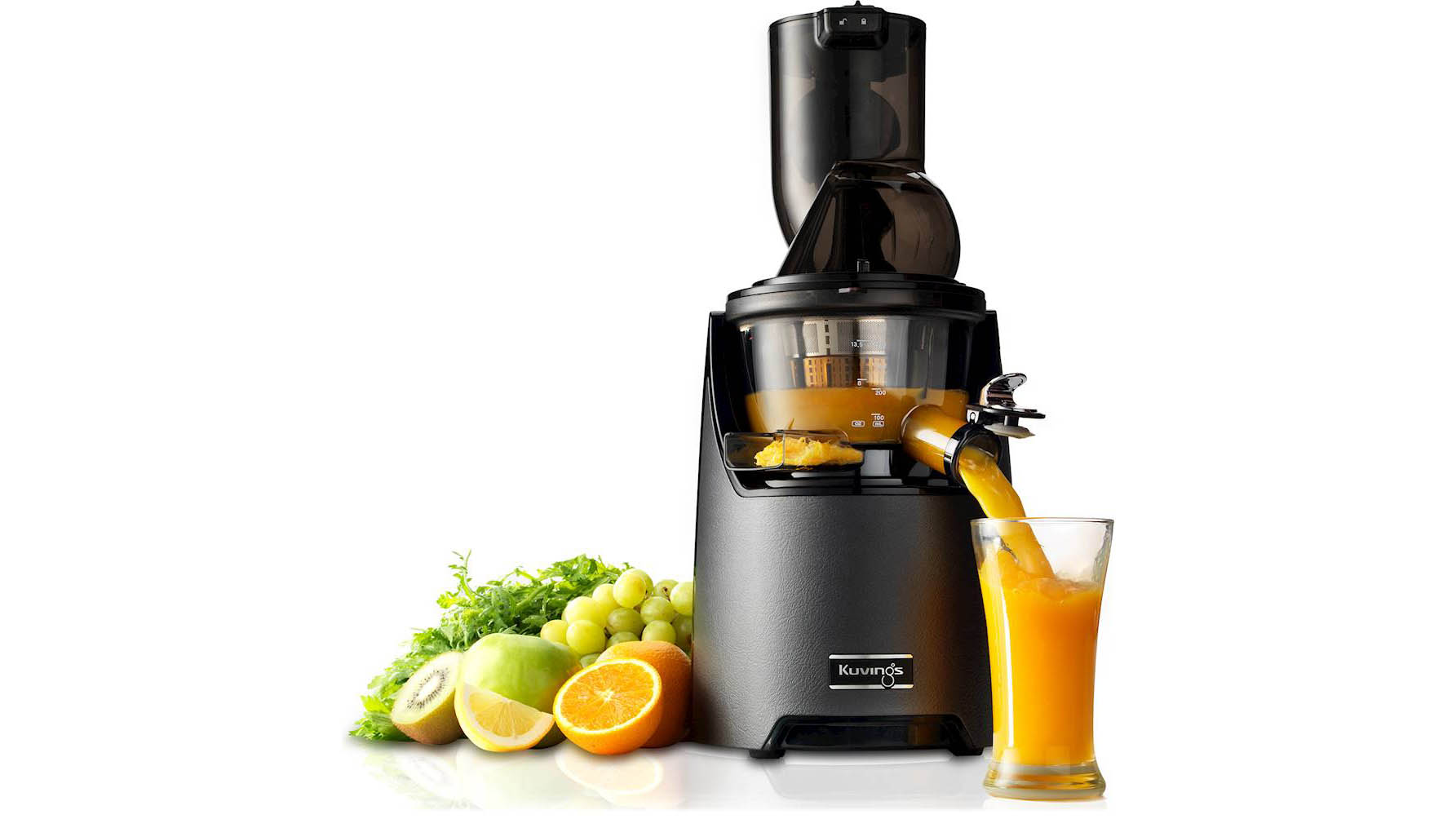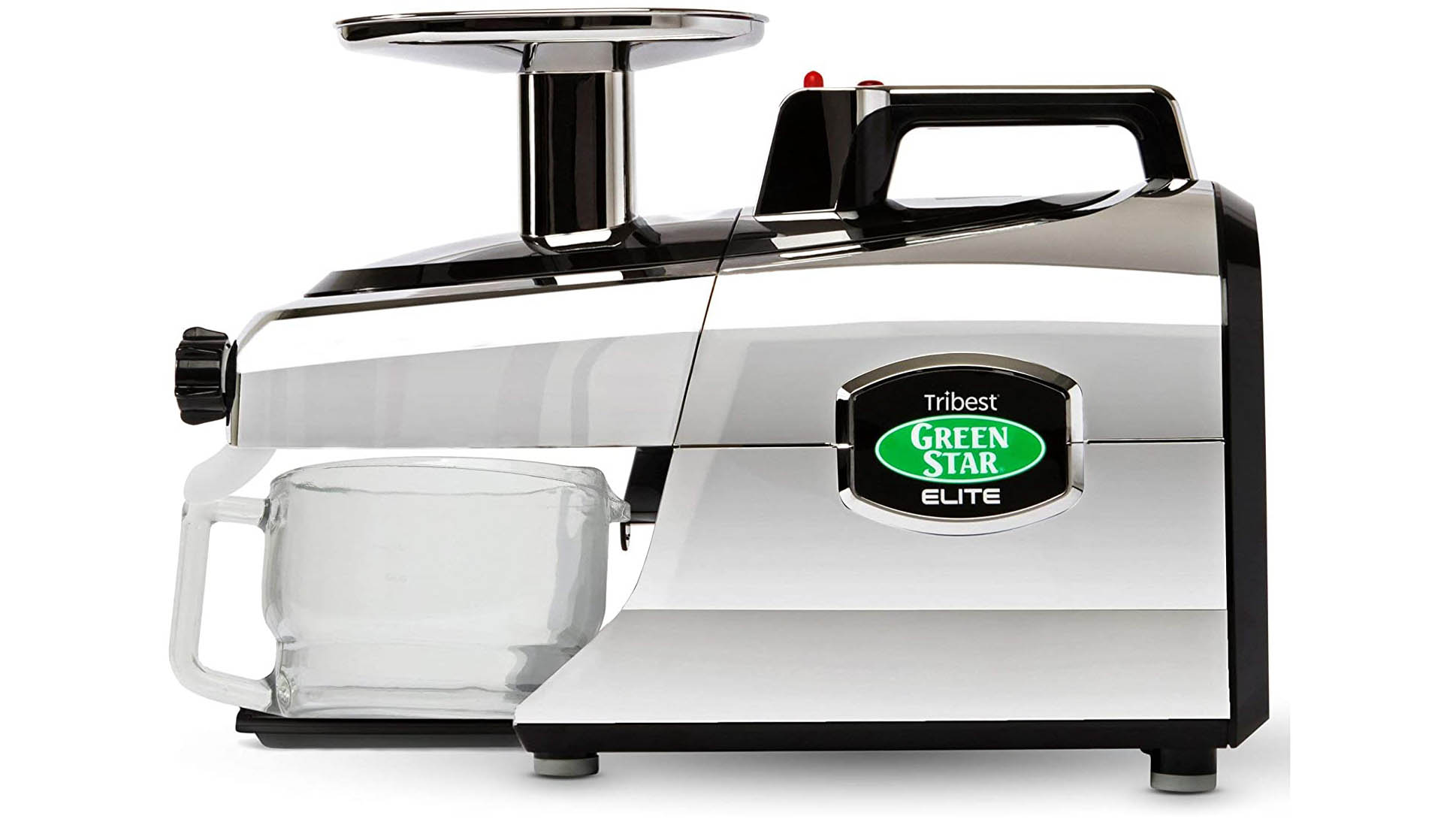Masticating vs centrifugal juicer: Which is best?
Masticating vs centrifugal juicer: Which is best?

We all love a fresh cup of juice in the morning and what better way to get information technology than freshly squeezed? Juicers are the fastest, most convenient way to get that juice and depending on the blazon, tin can produce it in varying ways. In fact, there are iii main types of juicer on the marketplace: masticating, centrifugal and triturating. But, which kind of juicer is best? Nosotros've pulled together a comprehensive guide on the pros and cons of masticating vs centrifugal juicers, as well as triturating juicers, to help you cull the best.
- Already decided which type you desire? Cheque out the best juicers correct now
- If you lot'd rather blend, bank check out the best blenders
- Plus: Have my advice — don't purchase a window vacuum cleaner
Masticating juicers

Masticating juicers are too known as dull juicers or cold-press juicers. These use an auger (motion-picture show a large corkscrew) to slowly 'chew' and beat out the fruit and vegetables, and squeeze the results against a strainer to divide the juice from the pulp. It's a slow process, operating at 40 to 100 rpm on average, but it produces a high quality of juice in terms of flavor and diet.
Less foaming and oxidation occurs using this method and information technology produces roughly 30% higher yield than centrifugal juicers. These juicers generally accept more fourth dimension and effort to use and they're more expensive also — for this reason they're best serious juicers and those who don't mind waiting.
Reasons to purchase a masticating juicer
- Works well on hard and soft fruit and vegetables, including leafy greens such as spinach or kale.
- As they're slow to procedure, these juicers don't rut up, so they better preserve nutrients including enzymes and antioxidants.
- Produces a higher quality of juice that's thicker, less foamy and has a more than intense flavor.
- Produces a higher juice yield, and so you lot get more out of your fruit and vegetables.
- The juice produced will last longer. Information technology tin can take a few days for the juice to deteriorate from a masticating juicer, so you tin brand a batch and store it in the fridge for later.
- Horizontal designs are more than versatile and tin can be used as a processor or grinder to make babe nutrient, nut butters and fifty-fifty pasta.
- Because these are tiresome, they're much quieter than centrifugal juicers too, operating at a low hum.
Reasons to avoid a masticating juicer
- These are slow to operate and take much longer than centrifugal juicers. Masticating juicers can besides merely bargain with one piece of fruit or vegetable at a time.
- The narrow chute means everything needs pre-cutting.
- Masticating juicers too tend to be more bulky and awkward to store, particularly if you opt for a horizontal design.
- These juicers come with more parts to clean, calculation to the maintenance.
- Masticating juicers tend to exist more expensive.
While pricey, the Omega J8006HDS Nutrition Heart is 1 of the all-time masticating juicers around. Its slow speed — just 80 rpms — ensures that your juice won't heat up, and it'south a champ with kale and leafy greens.
Centrifugal juicers

Centrifugal juicers, which are sometimes known as fast juicers, employ a spinning blade to shred fruit and vegetables into pulp. Via centrifugal force, the juice is then pressed through a surrounding mesh screen and separated from the pulp. These are the most popular kind of juicer as they're more affordable and convenient to use, producing juice much faster than other types of juicer.
All the same, this method induces oxidation as it operates at 10,000+ revolutions per minute. This ways the resulting juice is more foamy and separates hands. For this reason, they're not the best for producing a high quality juice. However, because of their lower cost and faster speeds, they're platonic if you're on a upkeep or desire to drinkable juice on the go. Centrifugal juicers are a expert pick for beginners who are new to juicing likewise.
Reasons to buy a centrifugal juicer
- Works well with hard fruits and vegetables, such as apples and carrots.
- Very user-friendly to utilize and quick to operate. Juicing can take less than a infinitesimal.
- Some come with larger chutes which tin can fit whole pieces of produce, such as apples or cucumbers. This means in that location's less prep fourth dimension.
- Tend to take up less countertop infinite. These are more lightweight as well, making them piece of cake to move around.
- Easier to make clean, as they come with less parts.
- The most affordable blazon of juicer.
Reasons to avoid a centrifugal juicer
- Doesn't handle leafy greens equally well and can also struggle with berries.
- Considering of its speed, oxidation occurs, which causes more foam and ultimately a lower quality of juice.
- The oxidation also ways the juice separates faster, and so information technology needs to be consumed as before long every bit it'south produced and can't be stored.
- Produce less juice yield vs masticating.
- The juice is as well heated from the speed of the rotation, which once more reduces its quality and any enzymes and vitamins will break down much faster.
- Some solids or pulp can also filter into the juice, including skins, seeds and stems.
- Because of the ability, centrifugal is the most noisy juicer to operate.
Amongst centrifugal juicers, our favorite model is the Breville BJE200XL Juice Fountain Compact, which has a small footprint but a powerful motor and a fine mesh strain for filtering out particles.
Triturating juicers

Triturating juicers, also known equally twin gear or horizontal juicers, are technically a type of masticating juicer, but come with two gears. The gears sit down millimeters autonomously and counter-rotate and so it can squeeze and crush the pulp simultaneously to get the best yield. These are slow operators, running at 60 to 120 rpm and come up with like pros and cons to single auger masticating juicers.
However, triturating juicers can process almost any fruit or vegetable you put in it. It will likewise produce the highest quality of juice which preserves its season and has a long shelf life. These machines don't come up cheap, and would be best for only the most serious of juicers.
Reasons to buy a triturating juicer
- Works with all kinds of fruit and vegetables and provides a consequent operation, fifty-fifty with leafy greens.
- Produces a very loftier quality juice as there's no heat or oxidation. It appears more than vibrant in color with minimal foam.
- Offers a high juice yield. Some models come with adjustable pressure, and then you tin can get the highest yield possible.
- The juice will take a long shelf life, lasting a few days in the fridge before degrading.
- Its horizontal design besides gives it more versatility as a processor and grinder. This type of juicer tin grind seeds and basics or even coffee beans.
- Triturating juicers are repose operators too, humming equally they process.
Reasons to avoid a triturating juicer
- Much similar unmarried auger masticating juicers, triturating juicers are slow to process and demand everything pre-cutting to fit down the chute. These ultimately take a lot of fourth dimension and try to use.
- The horizontal pattern can also take up a lot of countertop space.
- Triturating juicers are very heavy every bit well, so yous wouldn't want to lug it effectually often.
- More parts to clean compared to centrifugal juicers.
- The nigh expensive of juicer types you can buy, with some costing more than $one,000.
The Rolls Royce of juicers, the Tribest GSE-5050 Greenstar Elite, is a whopping $600, so you better really similar juicing to choice upward this model. Notwithstanding, information technology's well made, with twin steel gears to become every last drop out of whatever you put in.
Masticating vs. centrifugal juicers: Which should y'all buy?
Ultimately, the type of juicer you lot purchase will depend on your needs and upkeep. If you're looking to make a quick drink before heading out for work or the gym, and then a centrifugal juicer, with its faster speeds, may exist your all-time option. They're generally smaller and cheaper, too.
If, nonetheless, you desire to get as much juice out of fruits and vegetable equally you tin — and don't heed the wait or the higher cost — then a masticating or triturating juicer would better adjust your purposes.
- Here'due south how to clean a drinking glass stove
- This TikTok hack cleans your blender in seconds without a sponge
- Hither'south how to clean a cast iron skillet and remove rust
Source: https://www.tomsguide.com/news/masticating-vs-centrifugal-juicer-which-is-best
Posted by: downingdifebath.blogspot.com


0 Response to "Masticating vs centrifugal juicer: Which is best?"
Post a Comment